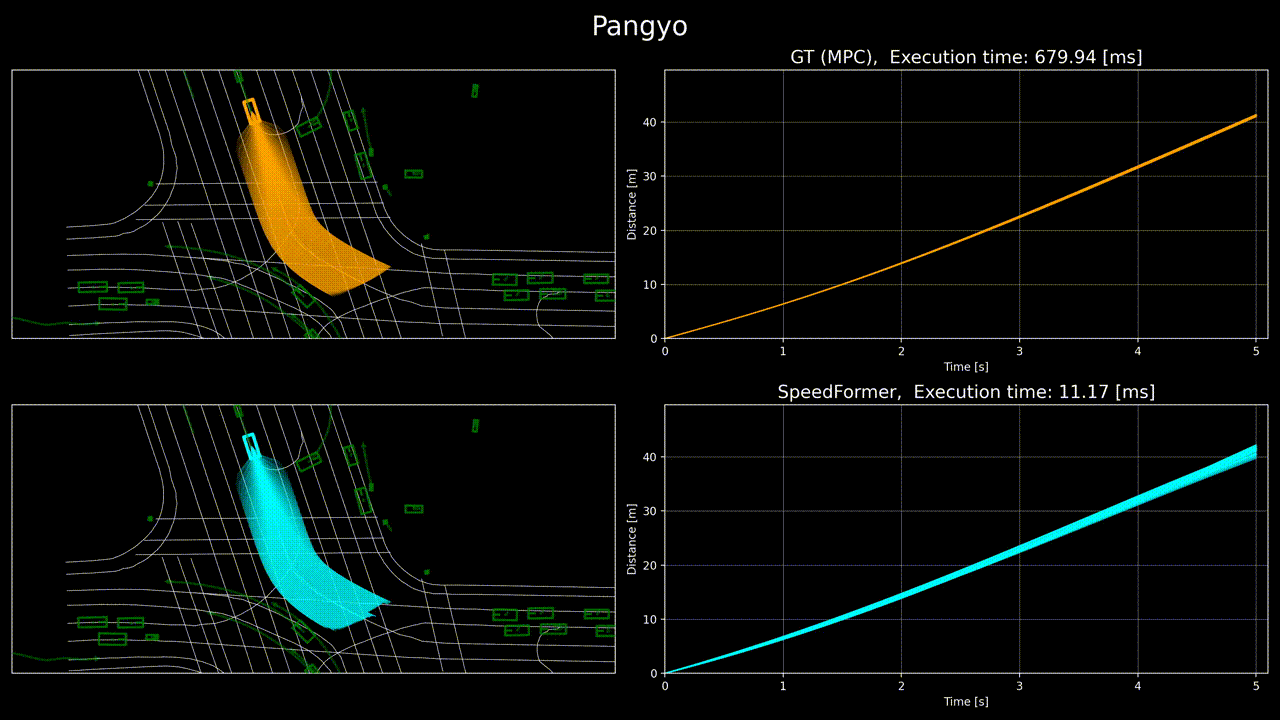SpeedFormer: Learning Speed Profiles with Upper and Lower Boundary Constraints Based on Transformer
Published in 2023 IEEE/RSJ International Conference on Intelligent Robots and Systems (IROS), 2023
As autonomous driving technology evolves, the need for precise, real-time motion planning grows ever more critical. Our latest research, “SpeedFormer: Learning Speed Profiles with Upper and Lower Boundary Constraints based on Transformer,” introduces a cutting-edge solution to this challenge.
The Challenge: Real-Time Trajectory Candidates Generation
Autonomous vehicles must generate an optimal trajectory that account for safety, comfort, and efficiency while navigating dynamic environments. Traditionally, Model Predictive Control (MPC) has been the go-to approach for this, but its computational inefficiencies make it impractical for handling large numbers of path candidates in real-time.
For example, MPC can take over 6 seconds to process 1024 path candidates—an eternity in scenarios demanding split-second decisions.
Our Solution: SpeedFormer
SpeedFormer leverages a Transformer-based neural network to predict the coefficients of quintic polynomials, representing speed profiles. This innovative approach enables:
- Real-Time Performance: SpeedFormer generates 1024 speed profiles in just 30 milliseconds, a process 200 times faster than MPC.
- Scalability: It handles long planning horizons without sacrificing computational efficiency.
- Accuracy and Safety: Tailored loss functions enforce upper and lower boundary constraints, ensuring the speed profiles align with safety requirements.
How It Works
SpeedFormer predicts speed profiles by learning from a large dataset of 500,000 simulated urban driving scenarios, curated using MPC optimization. The network architecture integrates latent query-based cross-attention layers, inspired by Perceiver IO, to maintain computational efficiency even with longer planning horizons.
A key innovation is the boundary constraint loss function, which minimizes violations of safety constraints. This feature significantly reduces the risk of collisions, even in challenging scenarios involving multiple vehicles.
Results: SpeedFormer vs. MPC
In extensive experiments, SpeedFormer demonstrated near-identical trajectory quality to MPC while vastly outperforming it in execution speed. Key metrics include:
- Execution Time: SpeedFormer processes trajectories in 30 ms vs. MPC’s 6,065 ms.
- Safety and Comfort: SpeedFormer minimizes jerk, acceleration, and boundary violations, providing smoother and safer speed profiles.
Video: Urban driving in Korea

